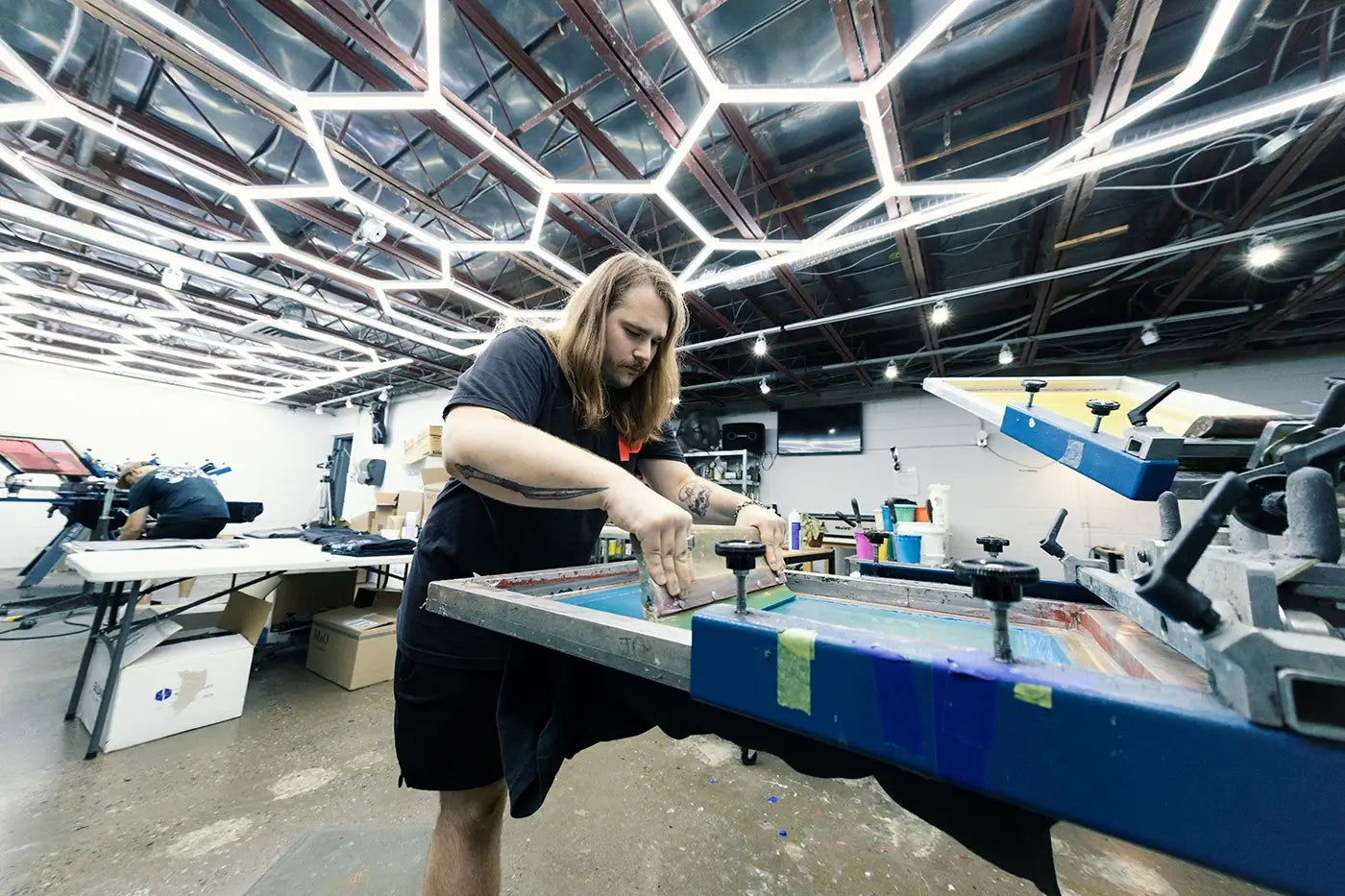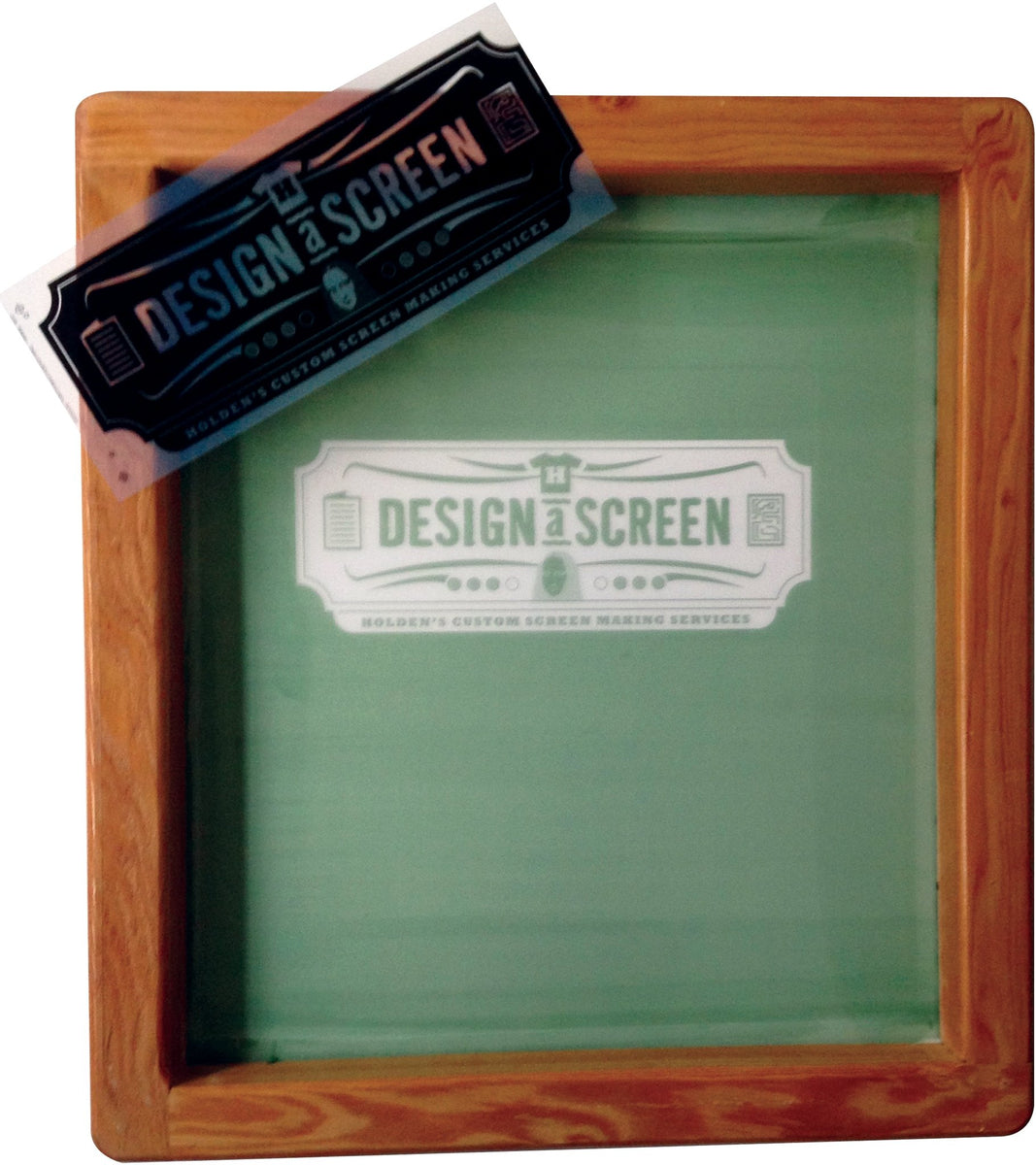High-Quality Custom Screen Printing for Team Apparel
Wiki Article
Screen Printing Uncovered: Everything You Need to Learn About Tee and Garment Printing Methods
If you've ever before questioned just how those dynamic designs wind up on your favorite tees, you remain in the ideal location. Screen printing is a remarkable method that combines art with strategy, supplying unlimited possibilities for creative thinking. Recognizing the fundamentals, from equipment to ink choices, can greatly affect your outcomes. Ready to explore the important aspects that make screen publishing an art kind? Let's reveal the details that can raise your tasks.
The Essentials of Display Printing: Just How It Functions
When you dive right into screen printing, you'll discover it's both an art and a science. At its core, display printing includes producing a stencil, or screen, that permits ink to travel through just in particular locations (screen printing kit). You begin by selecting your layout and preparing your display with a light-sensitive emulsion. Once you reveal this emulsion to light, it hardens, leaving your layout as a negative area.Next, you'll mix your inks and prepare your printing surface. Setting the display over the textile, then utilize a squeegee to push ink via the display onto the garment. This process calls for precision, as you want clear, vivid prints. After printing, you'll heal the ink with warm, guaranteeing it abides by the material and lasts through cleans. Each action is important, and understanding them will boost your display printing abilities, changing easy garments right into distinct, meaningful pieces.
Sorts Of Display Printing Strategies
When you understand the essentials of display printing, it's time to check out the different techniques that can elevate your styles. One preferred technique is conventional screen printing, where ink is pushed via a stenciled display. This technique is fantastic for strong, vibrant shades. After that there's water-based ink printing, which provides a softer feel and is green, yet it needs a various technique to treating.One more alternative is plastisol printing, known for its toughness and dazzling colors, making it a favored for lots of brand names. Experiment with halftone printing to develop slope impacts and detailed designs.
Essential Tools for Display Printing
To achieve magnificent results in display printing, having the right devices is essential. You'll require a strong display printing framework, which holds the mesh that moves your layout onto the garment. Next off, invest in high-grade squeegees; these are vital for applying ink equally throughout the screen.Choosing the Right Inks and Products
When selecting inks and materials for screen printing, you require to think about the sort of ink that functions ideal for your task. Think of material compatibility to assure your styles look last and terrific long. Check out environmentally friendly ink choices to make your printing procedure more sustainable.Kinds Of Display Inks
Choosing the best display ink is vital for achieving vibrant, resilient prints that satisfy your job's requirements. There are numerous kinds of display inks to analyze. Specialized inks, such as metallic or glow-in-the-dark, can include special impacts to your styles.Fabric Compatibility Factors To Consider
Comprehending textile compatibility is important for accomplishing top quality screen prints, particularly given that various materials respond distinctly to different inks. Always test your inks on example textile to ensure they adhere correctly and preserve shade integrity. Additionally, keep in mind that textile weight and appearance can influence the last outcome, so picking the appropriate ink and product combo is important for your project's success.Eco-Friendly Ink Options
Environmentally friendly inks are becoming a prominent option for screen printers who wish to decrease their environmental influence while preserving high quality. When selecting inks, consider water-based inks, which are less harmful and much easier to tidy up compared to typical solvents. These inks bond well with materials, providing dynamic results without harmful chemicals. You might also check out eco-solvent inks that make use of fewer unpredictable natural compounds (VOCs), making them a more secure alternative for both your health and wellness and the earth.Furthermore, look for inks made from renewable energies, such as soy or vegetable-based options. By picking the ideal inks and materials, you'll not just produce sensational styles however likewise add Get More Info to an extra sustainable printing procedure. Make the switch, and your prints will show your dedication to the environment!
Preparing Your Design for Screen Printing

File Style Needs
To guarantee your design looks sharp and dynamic on material, you'll require to pay very close attention to file layout demands for screen printing. Begin with vector data like AI or EPS, as they can be scaled without shedding high quality. If you utilize raster photos, go with high-resolution documents, such as TIFF or PNG, ideally at 300 DPI. Stay clear of utilizing JPEGs, as they can shed clearness when resized. Also, ensure your design has a transparent background to prevent unwanted white edges on your prints. Maintain color modes in mind; CMYK is typical for screen printing, so convert your RGB makes appropriately - screen printing kit. By following these standards, you'll set your artwork up for an effective print.Shade Splitting Up Strategies
Shade separation is a necessary action in preparing your style for screen printing, and understanding it can substantially boost Read Full Article your print top quality. You'll require to damage your style into individual shades, as each color calls for a separate screen throughout printing. This precision not only guarantees precise color depiction however also streamlines the printing process.Resolution and Dimension
Attaining the very best results in screen printing starts with assuring your layout has the appropriate resolution and dimension. Ideally, your artwork should be at the very least 300 DPI (dots per inch) for sharp, clear prints. If you make use of lower resolution, your final item may look pixelated and unprofessional.When it involves size, take into consideration the measurements of your print location. Layout your artwork to match the final print size, ideally developing it in the real dimensions you'll be printing. This way, you'll stay clear of any unexpected scaling concerns.
Constantly examine your design in both vector and raster formats. Vector graphics can be scaled without shedding high quality, making them ideal for display printing. Preparing properly will assure your style looks remarkable on every garment!
Step-by-Step Screen Printing Refine
Display printing is a dynamic procedure that permits you to create vivid styles on different surfaces. To start, you'll require a screen, emulsion, and your picked ink. Prepare your display by cleaning it completely. Next off, my company use the emulsion equally and let it completely dry in a dark area. Once dry, expose your screen to light with your layout placed on it, which will certainly solidify the solution where the light hits, developing a pattern - screen printing kit.Pour ink onto the screen and utilize a squeegee to press the ink through the pattern onto the fabric. Lift the display very carefully and allow the print completely dry. You've efficiently display published your layout.
Tips for Effective Display Printing Projects
While you're diving into your screen printing projects, bear in mind that preparation is essential to success. Start by gathering all your products-- inks, garments, screens, and squeegees. A tidy office helps prevent unwanted errors, so tidy up prior to you start.Following, confirm your art work is high-resolution and correctly sized for your garment. Test your display for appropriate direct exposure and clean it extensively to stay clear of smudges. When blending your inks, comply with the maker's standards to achieve the right consistency.
Throughout printing, use even stress with your squeegee for constant outcomes. Do not rush; take your time to confirm each print fulfills your standards. After printing, allow your garments completely dry entirely prior to dealing with or packaging them.
Last but not least, constantly maintain a sample of your work for future referral. This method, you can examine your development and improve your strategies in time. Pleased printing!

Regularly Asked Questions
Exactly how Lengthy Does It Require To Establish a Screen Printing Job?
Establishing up a screen printing work generally takes around 30 minutes to an hour. You'll prepare the screens, mix inks, and adjust journalism. The moment varies based on complexity and experience, so remain arranged!Can I Publish on Different Material Types Utilizing the Very Same Method?
Yes, you can publish on different fabric types using the exact same strategy, but you'll require to readjust your inks and setups. Some fabrics take in ink in different ways, so exploring guarantees the finest outcomes for each and every product.What Prevail Blunders to Prevent in Display Printing?
When screen printing, avoid common blunders like utilizing the wrong ink, neglecting proper exposure times, or skipping pre-press checks. Always examine your configuration and maintain clean displays to assure top quality results each time.Exactly How Can I Appropriately Clean and Maintain My Display Printing Equipment?
To properly tidy and keep your display printing devices, you ought to frequently clean screens with suitable solvents, examine mops for wear, and guarantee all devices are stored dry and dust-free. Consistency prevents costly repair work and enhances performance.Is Screen Printing Eco-friendly Contrasted to Other Methods?
Display printing can be a lot more ecologically pleasant than various other approaches, specifically if you utilize water-based inks and eco-conscious materials. By picking lasting materials and techniques, you minimize waste and minimize your effect on the planet.Screen Printing Uncovered: Whatever You Need to Know Concerning Tee Shirt and Garment Printing Techniques
At its core, screen printing entails creating a stencil, or screen, that allows ink to pass through just in details locations. Setting the screen over the textile, then make use of a squeegee to press ink with the display onto the garment. One popular method is traditional screen printing, where ink is pushed with a stenciled screen.When picking inks and products for screen printing, you need to take into account the kind of ink that works ideal for your project.
Report this wiki page